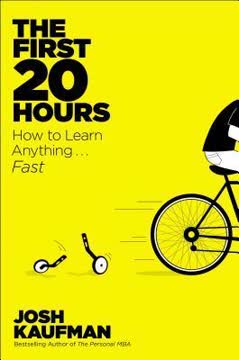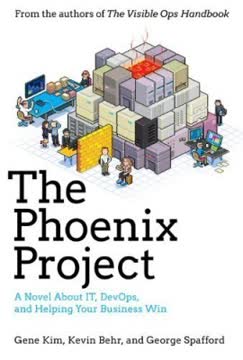Key Takeaways
1. Challenge Assumed Constraints to Unlock Your Potential
An Assumed Constraint Is A Belief You Have, Based On Past Experience, That Limits Your Current And Future Experiences.
Identify limiting beliefs. Assumed constraints are self-imposed limitations that prevent us from reaching our full potential. These beliefs often stem from past experiences or misconceptions about our abilities. Examples include:
- "I'm not creative enough for this job"
- "I can't learn new technologies at my age"
- "I don't have the authority to make changes"
Challenge and reframe. To overcome assumed constraints:
- Recognize the limiting belief
- Question its validity
- Look for evidence that contradicts the belief
- Reframe the belief in a positive, empowering way
By challenging these constraints, we open ourselves up to new possibilities and opportunities for growth.
2. Recognize and Leverage Your Points of Power
Perhaps your greatest weakness is not realizing your own power.
Identify your sources of power. Everyone has different types of power that can contribute to their success. The five points of power are:
- Knowledge power: Expertise and skills
- Personal power: Character, charisma, and interpersonal skills
- Relationship power: Connections and networks
- Task power: Responsibility for critical tasks
- Position power: Formal authority within an organization
Leverage your strengths. Once you've identified your points of power, use them strategically to achieve your goals. For example:
- Use knowledge power to become a go-to expert in your field
- Leverage relationship power to build alliances and gain support
- Apply task power to demonstrate your value through critical contributions
Remember that power is a tool for doing good and achieving positive outcomes, not for domination or control.
3. Diagnose Your Development Level for Each Task
Do you believe in magic?
Understand the Development Continuum. The Development Continuum consists of four stages that people typically experience when learning or taking on new tasks:
- D1: Enthusiastic Beginner (Low Competence, High Commitment)
- D2: Disillusioned Learner (Low to Some Competence, Low Commitment)
- D3: Capable But Cautious Performer (Moderate to High Competence, Variable Commitment)
- D4: High Achiever (High Competence, High Commitment)
Self-assess regularly. For each task or goal:
- Evaluate your competence (knowledge and skills)
- Gauge your commitment (motivation and confidence)
- Determine your current development level
By accurately diagnosing your development level, you can identify the type of support and direction you need to progress and succeed.
4. Seek Appropriate Leadership Styles Based on Your Needs
A Leader Is Anyone Who Can Give You the Support And Direction You Need To Achieve Your Goal.
Match leadership styles to development levels. The four leadership styles correspond to the development levels:
- S1: Directing (High Direction, Low Support) - for D1
- S2: Coaching (High Direction, High Support) - for D2
- S3: Supporting (Low Direction, High Support) - for D3
- S4: Delegating (Low Direction, Low Support) - for D4
Communicate your needs. Once you've diagnosed your development level:
- Identify the leadership style you need
- Communicate your needs to your manager or mentor
- Seek out additional resources or support if necessary
Remember that leaders aren't limited to those in formal positions of authority. Colleagues, mentors, or even subordinates can provide the leadership you need to succeed.
5. Use "I Need" to Effectively Collaborate for Success
The Two Most Powerful Words To Collaborate For Success Are: "I NEED."
Articulate your needs clearly. Instead of asking vague questions or making indirect requests, state your needs directly using "I need." This approach:
- Demonstrates self-awareness and proactivity
- Makes it easier for others to help you
- Increases the likelihood of getting what you require to succeed
Examples of effective "I need" statements:
- "I need 15 minutes of your time to discuss this project"
- "I need more specific feedback on my presentation"
- "I need additional resources to complete this task on time"
Avoid dumb questions that are obvious, insincere, or when you already know the answer. Instead, focus on clearly expressing your needs to collaborate effectively.
6. Progress Through the Development Continuum with Support
When Goals Work Out, It Is Usually Because You Instinctively Take The Initiative To Be A Self Leader And Get What You Need To Succeed.
Understand the journey. Progressing through the Development Continuum is a natural part of learning and growth. Each stage requires different types of support:
- D1 to D2: Reality sets in, enthusiasm wanes
- D2 to D3: Competence grows, confidence rebuilds
- D3 to D4: Mastery achieved, independence gained
Seek appropriate support. To move through the stages:
- At D1: Seek clear direction and guidance
- At D2: Ask for both direction and emotional support
- At D3: Request feedback and encouragement
- At D4: Take on more responsibility and autonomy
Remember that regression is normal when facing new challenges or changes. Be prepared to seek additional support when needed.
7. Take Responsibility for Your Own Success and Growth
Empowerment Is Something Someone Gives You. Self Leadership Is What You Do To Make It Work.
Embrace self-leadership. Taking responsibility for your success means:
- Proactively seeking the resources and support you need
- Challenging your own assumed constraints
- Continuously assessing your development level and adjusting your approach
Develop a growth mindset. View challenges as opportunities for learning and improvement. Strategies include:
- Setting clear, achievable goals
- Seeking feedback and acting on it
- Embracing failure as a learning experience
- Celebrating small wins and progress
Remember that while others can empower you, it's ultimately your responsibility to make the most of that empowerment through self-leadership.
Last updated:
FAQ
What's "Self Leadership and the One Minute Manager" about?
- Overview: "Self Leadership and the One Minute Manager" by Ken Blanchard, Susan Fowler, and Laurence Hawkins focuses on increasing personal effectiveness through situational self-leadership.
- Main Theme: The book emphasizes the importance of taking initiative and responsibility for one's own success in the workplace.
- Story Format: It uses a parable about a character named Steve, who learns self-leadership principles from a mentor named Cayla.
- Core Message: The book teaches that empowerment is something given, but self-leadership is what you do to make it work.
Why should I read "Self Leadership and the One Minute Manager"?
- Practical Guidance: It provides actionable strategies for improving personal and professional effectiveness.
- Empowerment Focus: The book emphasizes self-empowerment and taking control of one's career and life.
- Engaging Story: The narrative format makes complex concepts accessible and relatable.
- Proven Techniques: It builds on the successful One Minute Manager series, known for its practical management advice.
What are the key takeaways of "Self Leadership and the One Minute Manager"?
- Challenge Assumed Constraints: Recognize and overcome limiting beliefs based on past experiences.
- Celebrate Points of Power: Identify and leverage your strengths and resources.
- Collaborate for Success: Seek the direction and support needed to achieve goals.
- Development Continuum: Understand the stages of learning and the corresponding leadership styles required.
What is Situational Self Leadership as described in the book?
- Definition: Situational Self Leadership is the ability to take initiative and responsibility for one's own success, adapting to different situations.
- Three Tricks: It involves challenging assumed constraints, celebrating points of power, and collaborating for success.
- Development Levels: It includes diagnosing one's development level and seeking appropriate direction and support.
- Empowerment: It emphasizes that self-leadership is essential for making empowerment effective.
How does the book define "assumed constraints"?
- Definition: Assumed constraints are beliefs based on past experiences that limit current and future actions.
- Elephant Thinking: The book uses the metaphor of an elephant trained to believe it cannot break free, even when it can.
- Impact: These constraints can prevent individuals from taking initiative and achieving their potential.
- Overcoming: The book encourages challenging these constraints to unlock personal and professional growth.
What are the "points of power" mentioned in the book?
- Types of Power: The book identifies five types of power: knowledge, personal, relationship, task, and position power.
- Leverage Strengths: It encourages individuals to recognize and utilize their unique strengths and resources.
- Balance: Effective self-leadership involves balancing different types of power to achieve goals.
- Empowerment: Understanding and celebrating points of power is crucial for self-empowerment and success.
How does the book suggest collaborating for success?
- Seek Support: It emphasizes the importance of seeking direction and support from others to achieve goals.
- Use "I Need": The book highlights the power of using the phrase "I need" to communicate needs effectively.
- Leadership Styles: It discusses matching leadership styles to development levels for effective collaboration.
- Network: Building a network of collaborators can provide the necessary resources and support.
What is the Development Continuum in "Self Leadership and the One Minute Manager"?
- Four Stages: The Development Continuum includes four stages: Enthusiastic Beginner, Disillusioned Learner, Capable But Cautious Performer, and High Achiever.
- Competence and Commitment: Each stage is characterized by different levels of competence and commitment.
- Leadership Styles: The book matches each stage with a corresponding leadership style: Directing, Coaching, Supporting, and Delegating.
- Progression: Understanding this continuum helps individuals and leaders provide the right support and direction.
What role does the character Steve play in the book?
- Protagonist: Steve is a rising ad executive who becomes immobilized by new responsibilities.
- Learning Journey: He learns self-leadership principles from Cayla, a mentor who uses magic as a metaphor.
- Transformation: Through the story, Steve transforms from a victim mindset to a self-leader.
- Relatable: His journey illustrates the challenges and solutions in applying self-leadership concepts.
What are some of the best quotes from "Self Leadership and the One Minute Manager" and what do they mean?
- "Empowerment Is Something Someone Gives You. Self Leadership Is What You Do To Make It Work." This quote emphasizes the active role individuals must take in their empowerment.
- "Challenge Assumed Constraints!" It encourages readers to question and overcome limiting beliefs.
- "Celebrate Your Points of Power." This quote highlights the importance of recognizing and leveraging one's strengths.
- "Collaborate for Success!" It underscores the value of seeking support and working with others to achieve goals.
How does the book address the concept of empowerment?
- Empowerment vs. Self-Leadership: The book distinguishes between being given empowerment and actively practicing self-leadership.
- Active Role: It stresses that individuals must take initiative to make empowerment effective.
- Responsibility: Self-leadership involves taking responsibility for one's own success and development.
- Practical Steps: The book provides practical steps to enhance empowerment through self-leadership techniques.
How can the lessons from "Self Leadership and the One Minute Manager" be applied in real life?
- Workplace Application: Use the development continuum to assess and improve your skills and seek appropriate support.
- Personal Growth: Challenge assumed constraints to unlock personal potential and growth.
- Effective Communication: Use the "I need" phrase to communicate needs and collaborate effectively.
- Leadership Development: Apply the principles to become a more effective leader and empower others.
Review Summary
Self Leadership and the One Minute Manager receives mostly positive reviews, with readers praising its concise, engaging format and practical advice on self-leadership. Many appreciate the book's focus on challenging assumed constraints, recognizing personal power, and collaborating for success. The development continuum model and leadership styles are highlighted as valuable tools. Some readers find the storytelling approach helpful, while others consider it overly simplistic. Overall, reviewers recommend it as a quick, insightful read for both new and experienced leaders seeking to improve their self-leadership skills.
Similar Books






Download PDF
Download EPUB
.epub digital book format is ideal for reading ebooks on phones, tablets, and e-readers.













